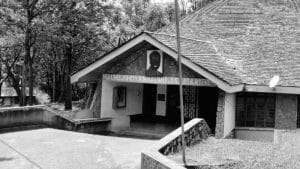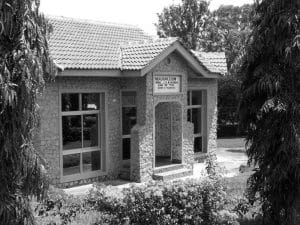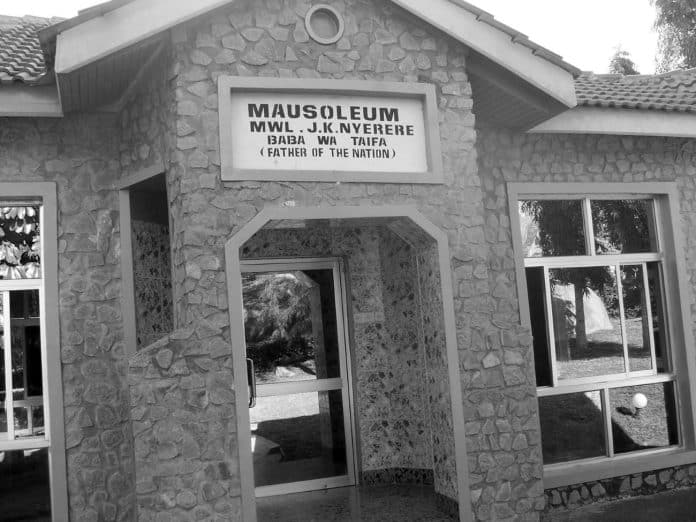Introduction to the Mwalimu Nyerere Museum Centre
As you step into the Mwalimu Nyerere Museum Centre in Butiama, Tanzania, you are immediately transported into a world that celebrates the life and legacy of one of Africa’s most revered leaders, Julius Kambarage Nyerere. Known affectionately as “Mwalimu,” which means “teacher” in Swahili, Nyerere’s impact on the nation of Tanzania and the continent as a whole is undeniable.
This museum, nestled in the heart of Nyerere’s birthplace, serves as a living tribute to his unwavering commitment to education, social justice, and the pursuit of African unity. Through interactive exhibits, historical artifacts, and captivating storytelling, the Mwalimu Nyerere Museum Centre invites you to delve into the life and legacy of this remarkable individual, whose influence continues to shape the nation and inspire people worldwide.
The Significance of Mwalimu Nyerere in Tanzanian History
Mwalimu Nyerere was a pivotal figure in Tanzania’s history, serving as the country’s first president from 1962 to 1985. His visionary leadership and unwavering dedication to the principles of socialism and self-reliance transformed Tanzania into a beacon of hope and stability in a region often plagued by political turmoil.
Nyerere’s commitment to education was a cornerstone of his vision for Tanzania. He believed that education was the key to empowering the people and building a more equitable society. Under his guidance, Tanzania achieved remarkable progress in literacy rates and access to education, with a particular focus on expanding opportunities for women and marginalized communities.
Beyond his domestic achievements, Nyerere also played a crucial role in the broader African liberation movement. He was a staunch advocate for the independence of African nations, and his support for liberation movements across the continent earned him the respect and admiration of leaders and citizens alike.
Exploring the Mwalimu Nyerere Museum Centre

The Mwalimu Nyerere Museum Centre is a sprawling complex that encompasses several buildings and outdoor spaces, each dedicated to preserving and showcasing different aspects of Nyerere’s life and legacy.
As you enter the museum, you are greeted by a grand statue of Mwalimu Nyerere, standing tall and commanding the attention of all who visit. This powerful image sets the tone for the journey that lies ahead, inviting you to delve deeper into the life and achievements of this remarkable leader.
- The Main Museum Building: This impressive structure houses the bulk of the museum’s exhibits, chronicling Nyerere’s life from his childhood in Butiama to his rise to national and international prominence. Visitors can explore interactive displays, view personal artifacts, and immerse themselves in the rich history of Tanzania’s independence and nation-building efforts.
- The Mwalimu Nyerere Library: Adjacent to the main museum building, this library serves as a hub for research and learning, providing access to a vast collection of books, documents, and multimedia resources related to Nyerere’s life and work.
- The Mwalimu Nyerere Memorial Site: A serene outdoor space located within the museum complex, this memorial site is the final resting place of Mwalimu Nyerere. Visitors can pay their respects and reflect on the enduring legacy of this beloved leader.
- The Mwalimu Nyerere Conference Centre: This state-of-the-art facility hosts a variety of events, conferences, and educational programs, serving as a hub for intellectual discourse and the continued exploration of Nyerere’s ideas and philosophies.
Exhibits and Artifacts at the Museum
The Mwalimu Nyerere Museum Centre is a treasure trove of historical artifacts and interactive exhibits that bring the life and times of this iconic leader to life. As you explore the various galleries and displays, you’ll be captivated by the following:
- Personal Belongings: Visitors can view Nyerere’s personal effects, including his signature glasses, writing instruments, and other items that provide a glimpse into his daily life and routines.
- Political Memorabilia: The museum showcases a vast collection of political memorabilia, including campaign posters, official documents, and historical photographs that chronicle Nyerere’s journey from a young activist to the first president of Tanzania.
- Educational Resources: Recognizing Nyerere’s deep commitment to education, the museum features a wealth of educational resources, including textbooks, teaching materials, and student projects that highlight the impact of his educational reforms.
- Audiovisual Displays: Immersive audiovisual exhibits transport visitors back in time, allowing them to witness key moments in Nyerere’s life through documentary footage, interviews, and interactive timelines.
- Artistic Interpretations: The museum also showcases a range of artistic interpretations of Nyerere’s life and legacy, including paintings, sculptures, and multimedia installations that capture the essence of his vision and values.
The Life and Achievements of Mwalimu Nyerere
Mwalimu Nyerere’s life was a testament to his unwavering commitment to the principles of social justice, African unity, and the empowerment of the people. Born in 1922 in the village of Butiama, Nyerere’s early life was shaped by his experiences as a student, teacher, and community leader.
After completing his education, Nyerere returned to Tanzania (then known as Tanganyika) and began his journey as a passionate advocate for independence. He co-founded the Tanganyika African National Union (TANU) in 1954 and led the country’s struggle for self-rule, culminating in the country’s independence in 1961.
As the first president of Tanzania, Nyerere implemented a socialist economic model known as “Ujamaa,” which emphasized the principles of self-reliance, collective ownership, and the equitable distribution of resources. Under his leadership, Tanzania made significant strides in improving access to education, healthcare, and basic services for its citizens.
Nyerere’s impact extended beyond Tanzania’s borders, as he played a crucial role in the African liberation movement. He was a vocal supporter of independence movements across the continent and actively worked to foster unity and cooperation among African nations.
Events and Activities at the Museum
The Mwalimu Nyerere Museum Centre is not just a static repository of historical artifacts; it is a vibrant hub of cultural and educational activities that engage visitors of all ages. Throughout the year, the museum hosts a variety of events and programs that celebrate Nyerere’s legacy and promote the continued exploration of his ideas and philosophies.
- Lecture Series: The museum regularly hosts lectures and panel discussions featuring renowned scholars, political leaders, and activists who delve into the various aspects of Nyerere’s life and work.
- Cultural Performances: Visitors can enjoy traditional dance, music, and theatrical performances that showcase the rich cultural heritage of Tanzania and the broader African continent.
- Educational Workshops: The museum offers a range of educational workshops and programs, including history lessons, civic engagement activities, and leadership development initiatives for students and young professionals.
- Commemorative Events: The museum plays a central role in organizing and hosting events that commemorate significant milestones in Nyerere’s life, such as his birthday, the anniversary of Tanzania’s independence, and other important national holidays.
- Temporary Exhibitions: In addition to its permanent exhibits, the museum regularly features temporary exhibitions that explore specific themes or aspects of Nyerere’s legacy, providing visitors with a dynamic and ever-evolving experience.
Visiting Butiama and the Mwalimu Nyerere Museum Centre

Butiama, the birthplace of Mwalimu Nyerere, is a peaceful and picturesque village located in the Mara region of Tanzania. The Mwalimu Nyerere Museum Centre is the main attraction in Butiama, drawing visitors from around the world who come to learn about and honor the life and legacy of this remarkable leader.
To visit the museum, you can easily access Butiama by road or air. The village is located approximately 30 kilometers from the nearest major city, Musoma, and can be reached by taking a scenic drive through the rolling hills and lush landscapes of the Mara region.
Once in Butiama, the museum is well-signposted and easy to find. Visitors are encouraged to allocate at least half a day to explore the various exhibits and participate in the museum’s activities. The museum staff are knowledgeable and eager to share their insights, ensuring that your visit is both informative and enriching.
Preserving the Legacy of Mwalimu Nyerere
The Mwalimu Nyerere Museum Centre stands as a testament to the enduring impact of this remarkable leader, whose vision and values continue to inspire people around the world. By preserving his legacy and sharing his story, the museum plays a vital role in shaping the future of Tanzania and the broader African continent.
As you leave the museum, you’ll carry with you a deeper understanding and appreciation for Nyerere’s life and work. His unwavering commitment to education, social justice, and African unity serves as a guiding light for those who seek to build a more equitable and prosperous world.
The Mwalimu Nyerere Museum Centre is not just a repository of historical artifacts; it is a living, breathing testament to the power of leadership, vision, and the transformative potential of a single individual. By visiting this remarkable institution, you too can become a steward of Nyerere’s legacy, ensuring that his vision for a better Tanzania and a better Africa lives on for generations to come.
For more articles related to Cultural Institutions, click here!

































